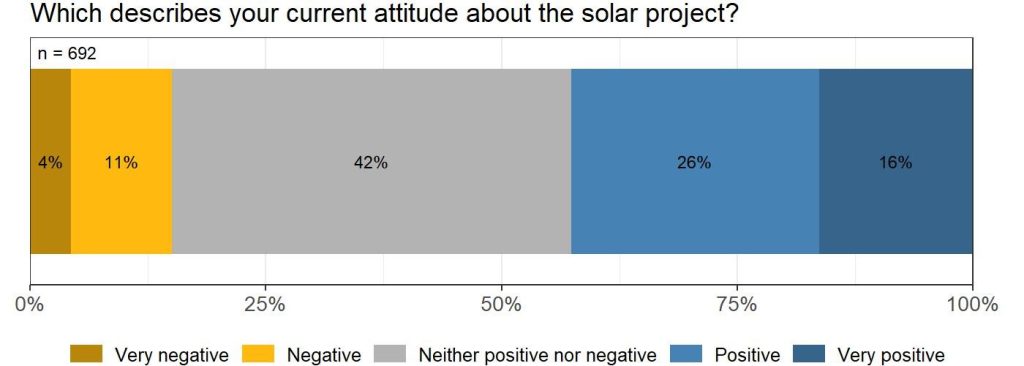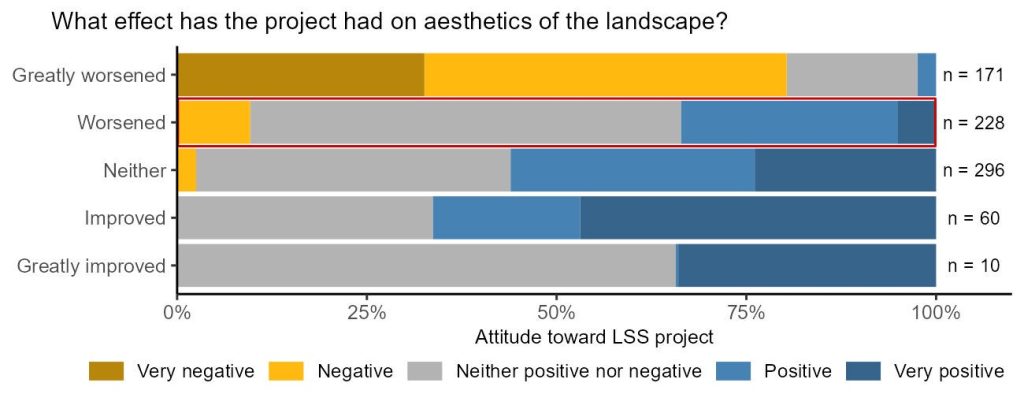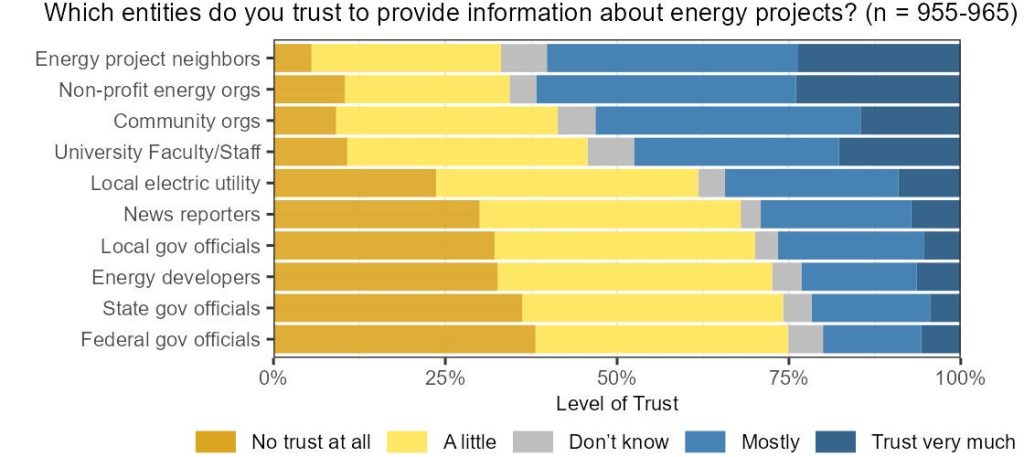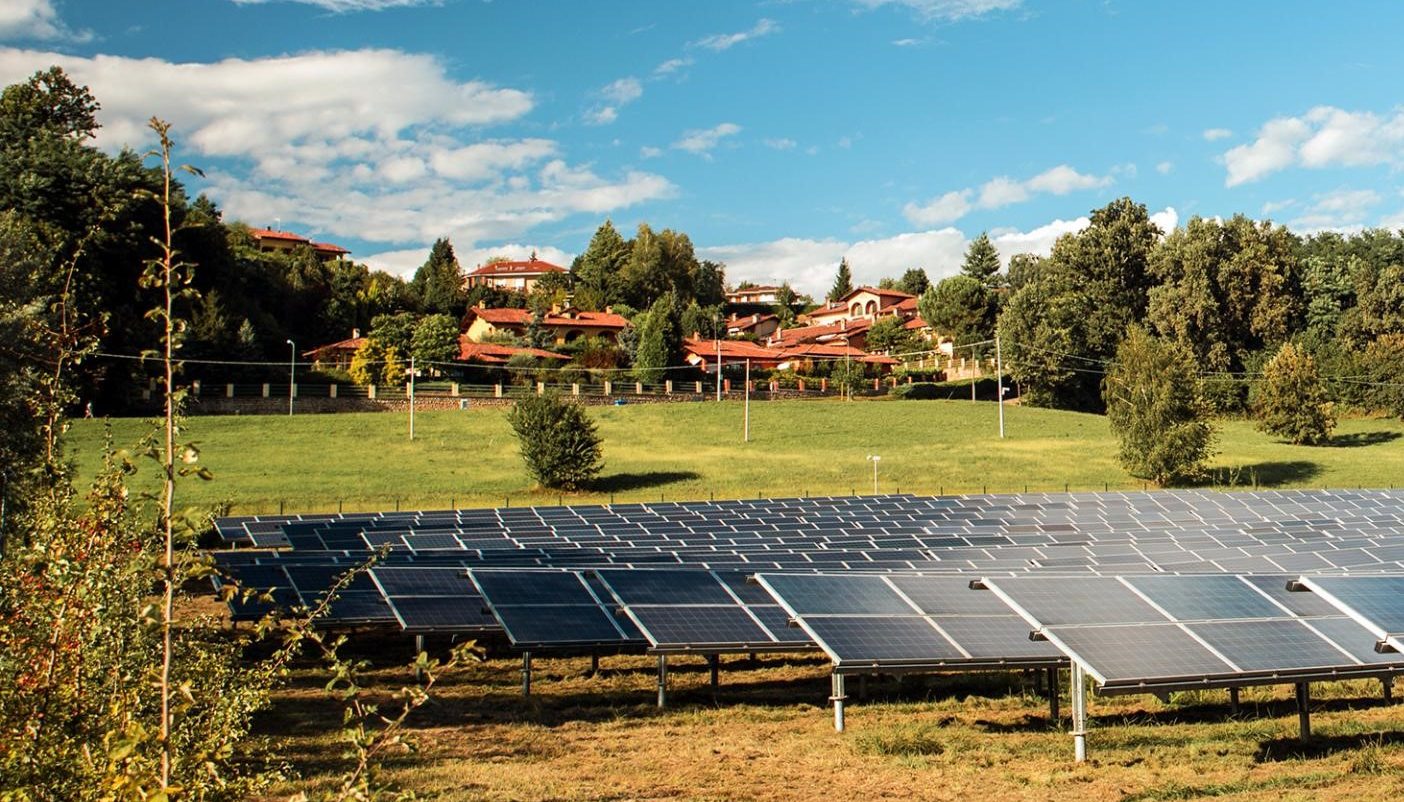A survey of nearly 1000 residents living near large-scale solar plants finds considerably more positive attitudes than negative, while identifying key concerns.
riven by favorable economics, policy factors, and decarbonization goals, large-scale solar (LSS, defined here as ground-mounted photovoltaic projects ≥1 MWDC) has expanded rapidly in recent years, with more than 90 gigawatts (GW) now installed across the United States. Growth in LSS deployment is anticipated to accelerate in response to growing electricity demand and utility, state, and federal decarbonization goals. This continued expansion hinges, in part, on the continued support of local residents and decision-makers in communities hosting LSS projects. But that support is not guaranteed; LSS developers now cite opposition as one of the leading causes of project delays and cancellations. Understanding the perceptions and attitudes of existing LSS neighbors is critical to inform and enable future LSS deployment, and to improve outcomes for those host communities.
As of 2022, there were more than 10 million U.S. homes within 3 miles of LSS plants. Yet, until recently, no comprehensive study had examined the experiences and perceptions of these LSS neighbors. In 2023, a Berkeley Lab led team conducted the first-of-its-kind nationally representative survey of LSS neighbors as part of the Community-Centered Solar Development research project. The survey effort ultimately collected 984 responses from residents within 3 miles of existing LSS projects.
A full set of survey analysis results is available in a slide-deck report here, along with a 4-page summary brief.
A summary of key takeaways and highlights are listed below:
- Among LSS neighbors, “positive” attitudes outnumber “negative” by nearly a 3 to 1 margin. Looking across the full set of respondents that were aware of their local LSS project, 43% reported a “positive” or “very positive” attitude toward it, 42% were “neutral”, and 15% reported a “negative” or “very negative” attitude. 42% report that they would support additional LSS in their community, compared to 18% that would oppose it.

- Support is somewhat lower for residents within ¼ mile, where positive and negative attitudes are roughly evenly split. For respondents beyond ¼ mile, positive attitudes vastly outnumber negative attitudes.
- Very large (>100 MW) projects elicit substantially more negative attitudes compared to smaller and mid-sized projects. Negative attitudes outnumber positive by a 12:1 margin around the largest projects (>100 MW) in our sample. Yet that trend is reversed for projects below 100 MW: Attitudes are 5:1 positive for 50-100 MW projects; 2:1 positive for 2-50 MW projects, and 5:1 positive for 1-2 MW projects.
- Perceptions relating to aesthetic, economic, and quality of life impacts are strongly correlated with attitudes. Similarly, perceptions of the fairness of the planning process are strongly correlated with attitudes. Yet, it is also clear that LSS neighbors negotiate trade-offs with their local projects. For example, many report a positive attitude despite perceiving a negative aesthetic impact (see red box in the figure below).

- Roughly 1/3 of residents living within 3 miles of LSS projects did not know their local project existed. Those living closest to projects and respondents around the largest projects in our sample (>100 MW) tended to be more familiar with them, but even some respondents living within ½ mile were unaware.
- Less than 1/5 of respondents were aware of the local LSS project prior to its construction. This suggests there may be room for improvement in planning and engagement with project neighbors to improve awareness, participation, and enhance procedural justice.
- There is very little support among existing LSS neighbors for increased state-level decision-making in future LSS siting decisions. LSS neighbors strongly support increased opportunities to participate in the planning process, the use of third-party advocates to inform community members and intervene on their behalf, and increased opportunities to provide feedback after the project is constructed.
- Existing energy project neighbors, community and non-profit orgs, and university staff are most trusted sources of information. LSS project developers and government officials are the least trusted.

- Disturbed sites (e.g., landfills, industrial sites) are vastly preferred over forests and productive farmland for siting additional LSS. In addition, respondents expressed a preference for future LSS projects to hire local employees, purchase local materials, and offer local ownership.
While these initial results significantly advance our understanding of the perceptions of local residents coexisting with LSS, additional analyses of these survey data are planned. These include a more statistically robust analysis of the factors influencing attitudes and a deeper examination of procedural justice through the lens of LSS neighbors.
We thank the U.S. Department of Energy’s Solar Energy Technologies Office for their support of this work, as well as the many LSS neighbors who took the time to respond to the survey, without whom this work would not have been possible.



























